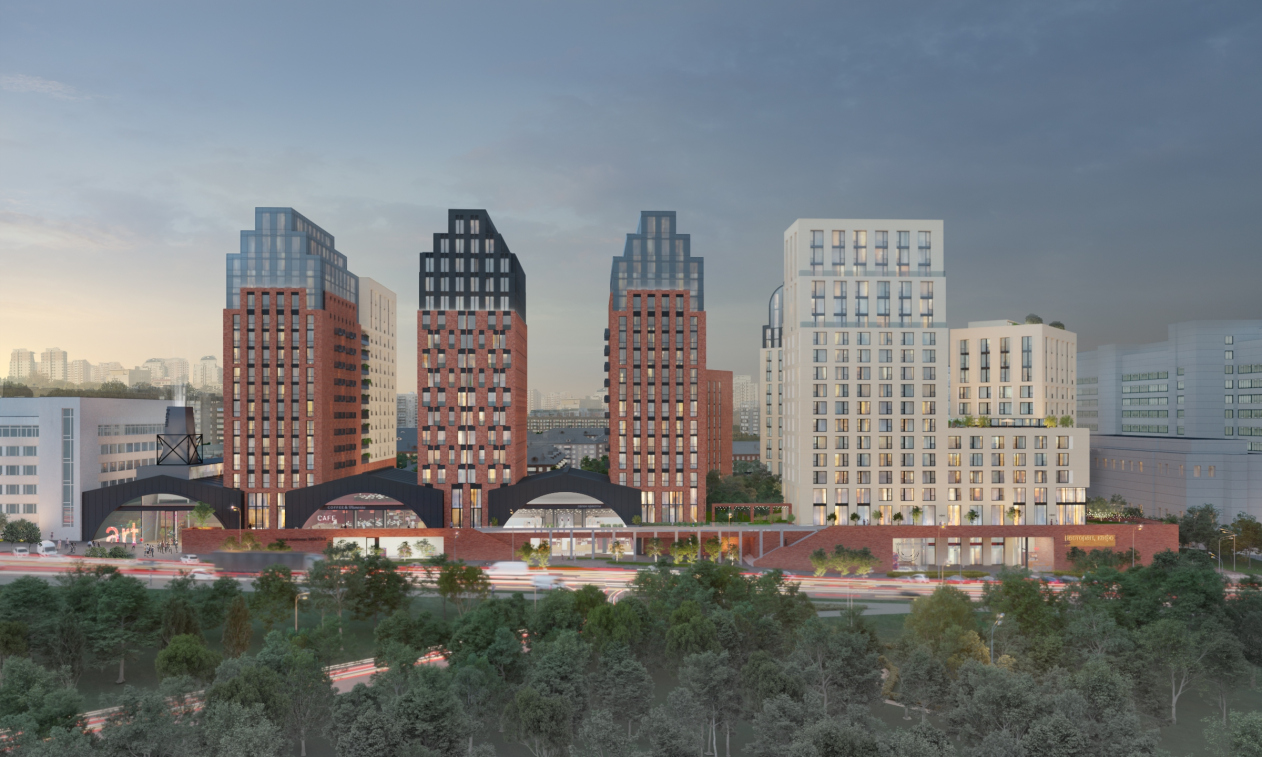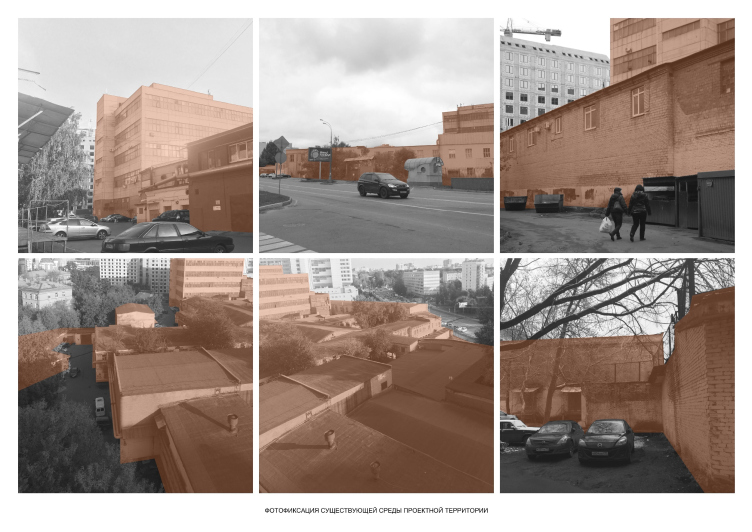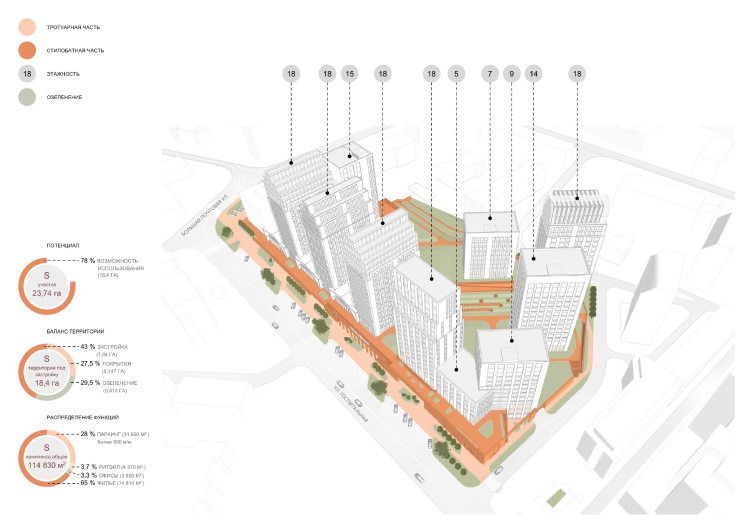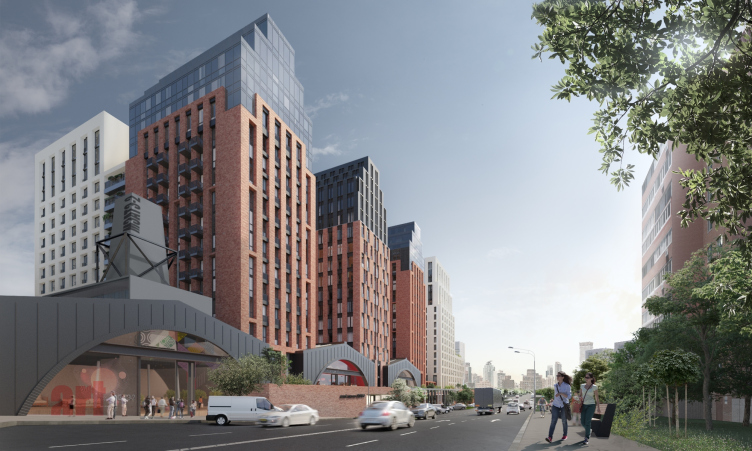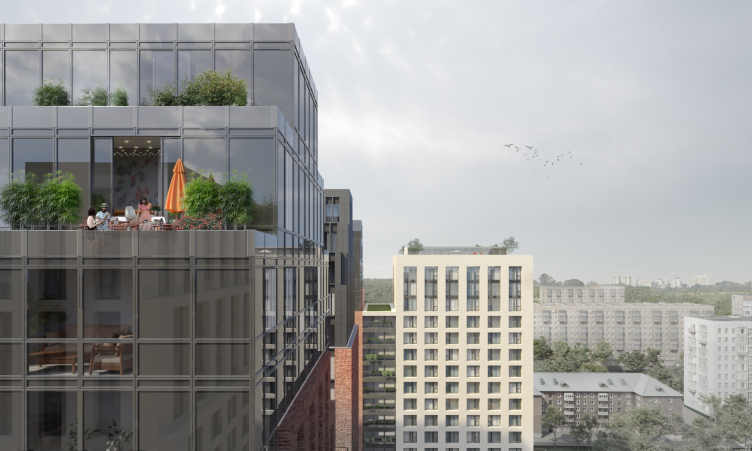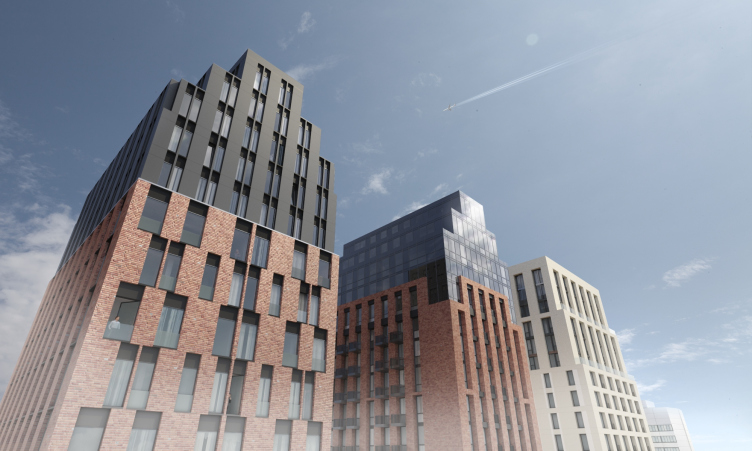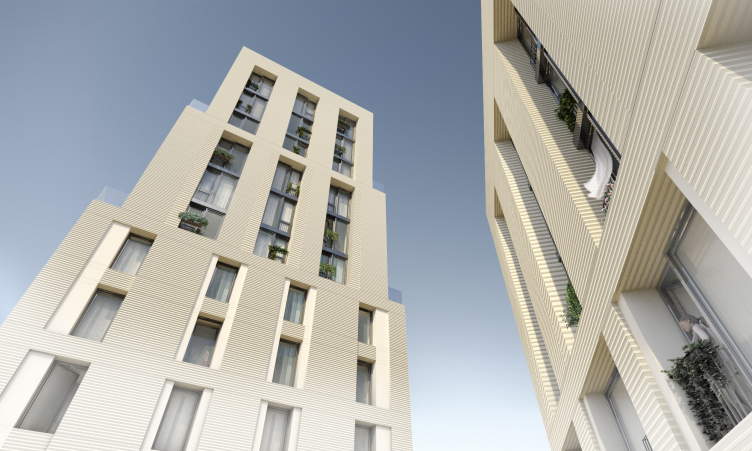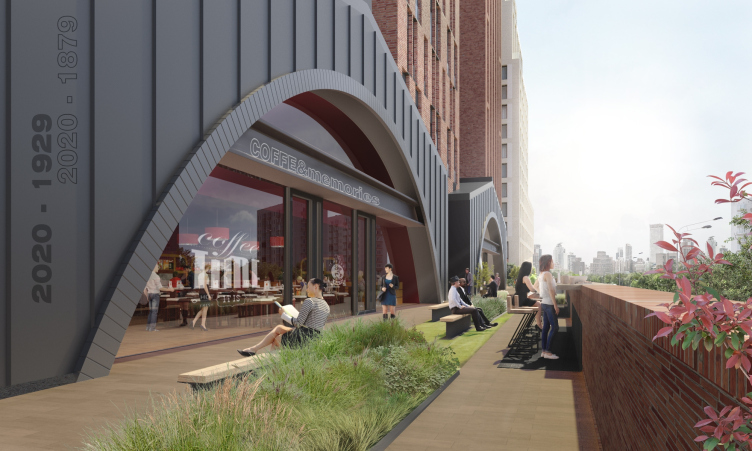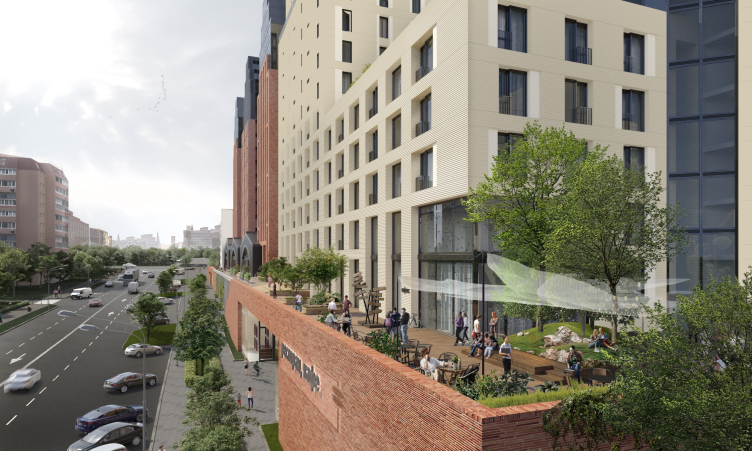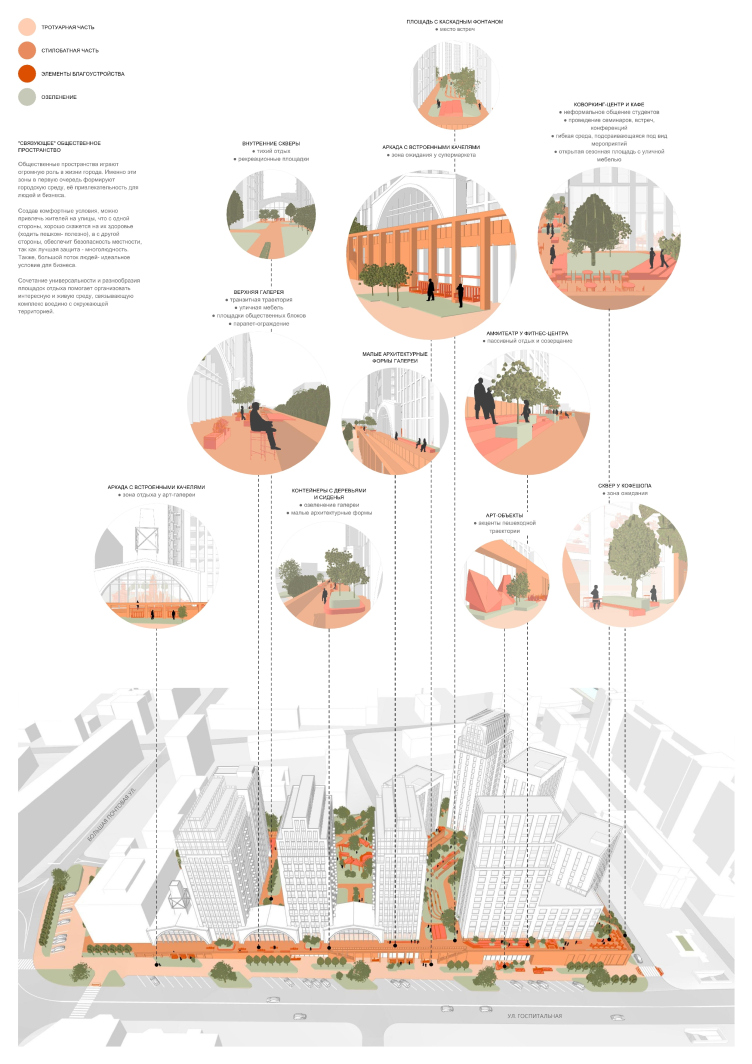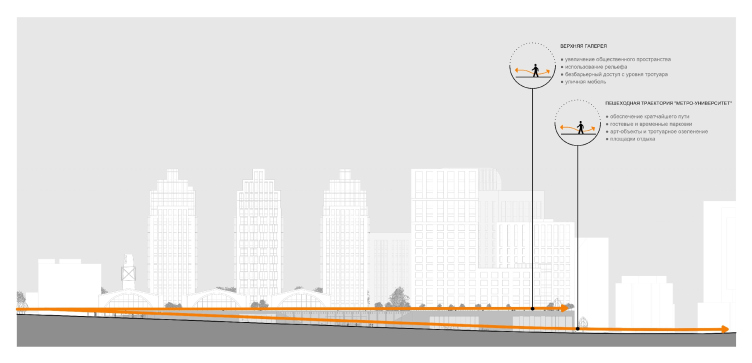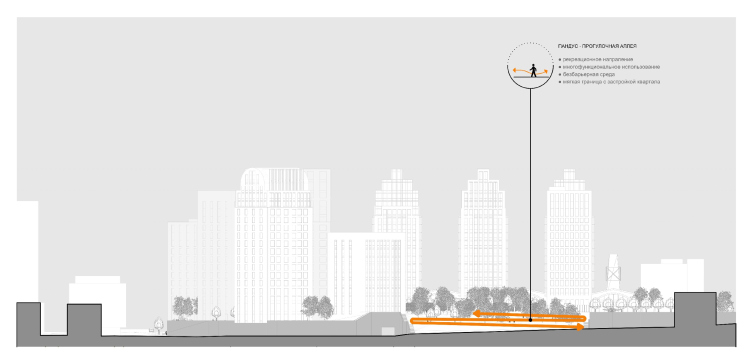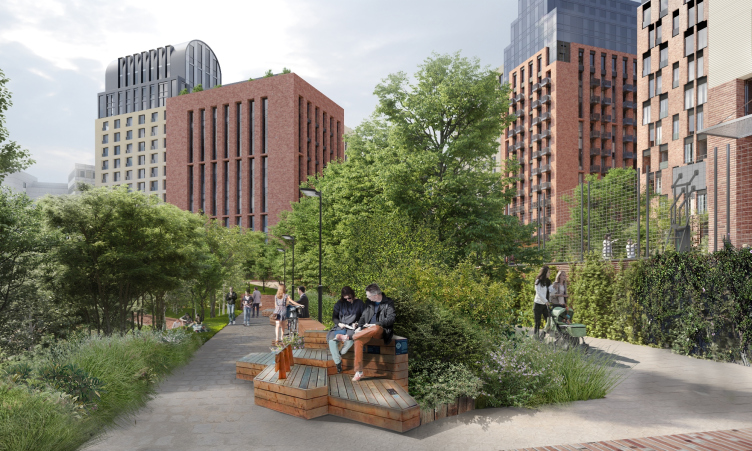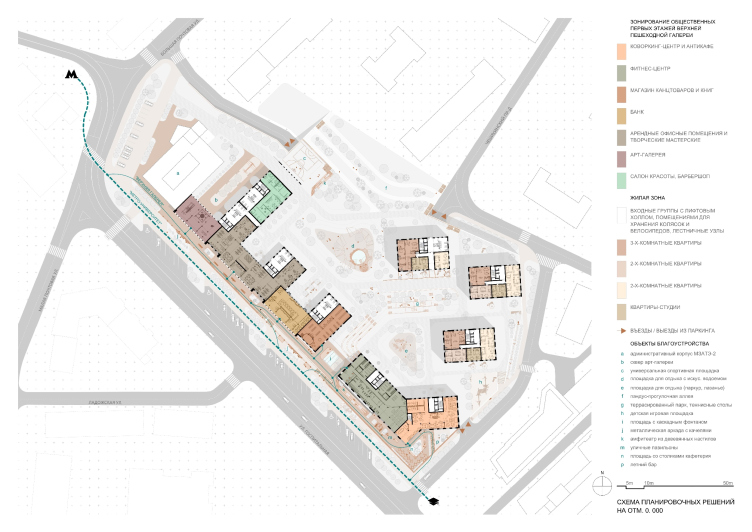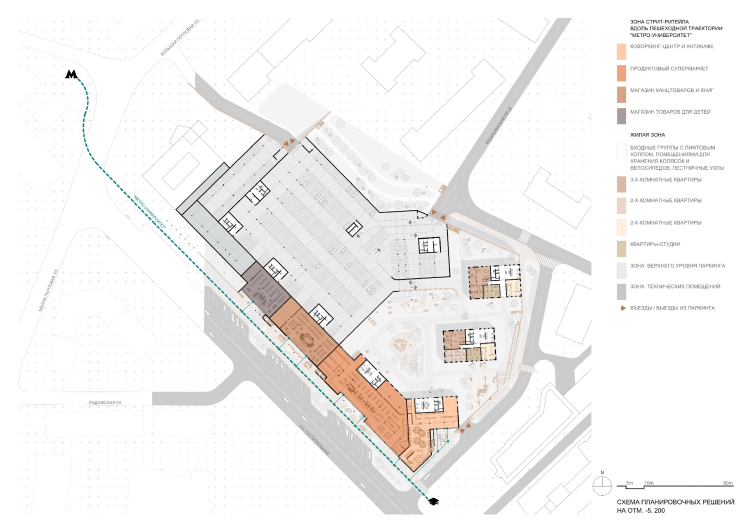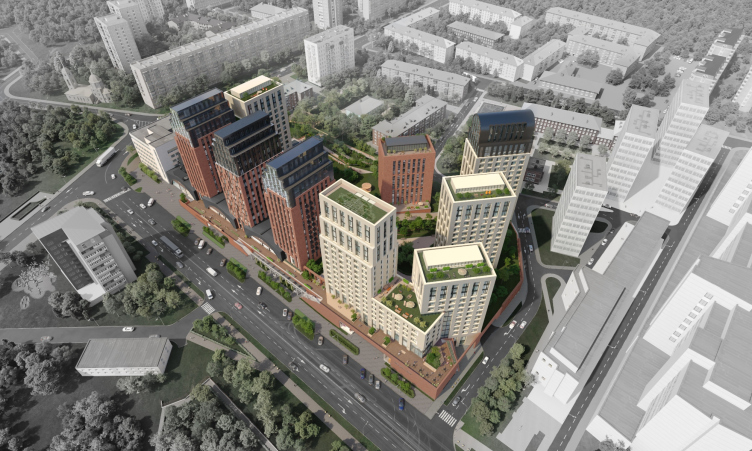The housing complex on the Malaya Pochtovaya Street is being built next to Moscow State Technical University named after N.E.Bauman, a prestigious educational institution that defines the atmosphere of this part of the Basmanny district of Moscow. There are lots of buildings around here that belong to the university, as well as to the startup companies that some of the university alumni launch after graduation. That is to say that this place is dominated by young, smart, and active people, chiefly male. You could even say that this is the nest of Richard Florida’s creative class because in his world-famous book “The Rise of the Creative Class” the sociologist wrote first of all about IT specialists who are in great demand in the modern world. In the age of augmented intelligence, the brainpower is flourishing and feeling confident about tomorrow. And, although the technical progress is moving forward by leaps and bounds in this field, the town-planning progress in this area of the nation’s capital is decades behind.
The development of this territory is expected to gain extra momentum thanks to the opening of a new additional entrance of the Baumanskaya metro station. The stream of commuters will be rerouted through the industrial park of the former plant of electrical equipment MZATE-2. Currently, the territory of the plant is outside of the life circle of the neighborhood, and the architectural environment does not meet people’s needs either. The endless walls and fences form labyrinths and dead-end alleys of a loosely organized, chaotic, and faceless industrial area. The residents of the nearby homes are forced to detour this area as an estrangement zone, while the university students have to contemplate the tar sheet roofs from the auditoriums.
The multifunctional housing complex at Malaya Pochtovaya, 12
Copyright: © City-Arch
The town-planning situation
Copyright: © City-Arch
The block construction analysis
Copyright: © City-Arch
The current environment of the MZATE-2 factory
Copyright: © City-Arch
The architects of “City-Arch” are proposing their own solution for the town planning problems of this area as a multifunctional housing development. The prevalence of the housing function will not only add to the housing stock in the city center, but also ensure comfort and safety of the city block: the area will be “watched over” from the windows of the new homes 24/7. As for the residents of the new complex, they will get a 5-minute walking distance to the metro station, a 7-minute walking distance to the Lefortovsky Park, and functionally eventful bottom floors. Running down the Gospitalnaya Street, the path to the new entrance to Baumanskaya metro station (to be opened in 2020) will not run past the dull factory fence anymore but past shop windows and a landscaped pavement with art objects and recreation spots. Making use of the fact that the ground level goes down from the metro station towards the university the height of a whole floor, the architects were even able to make two levels for pedestrian walks. Thus, the first “New York” association comes to mind – it looks a little bit like the High Line Park that carries the public functions of the bottom multi-height floors. The metro station, the university, and the housing complex itself are significant gravity centers, so there is no double that street retail will be in demand here.
The form-making scheme of the complex
Copyright: © City-Arch
Thanks to its height difference, the construction site of an irregular shape gave the architects an opportunity to inscribe the underground parking garage into the podium part of the project, which ultimately vacated extra area for landscaping. The client – MZATE-2, the owner of the land – expectedly briefed great density – about 39 000 people per hectare. Proceeding from the required figure and the maximum allowed height, the architects positioned the “building blocks” (of a known yield of useful floor space) along the perimeter of the land site, then turned them around based on the insolation and aeration of the apartments, as well as the organization of the yard space. Playing around with the number of floors in each of the sections (it ranges from 7 to 18), the architects were able to come up with diverse silhouettes and provide most of the apartments with panoramic views.
The technical and economic performance of the complex
Copyright: © City-Arch
The complex consists of ten towers. Five towers are lined up alongside the street, three are turned at an angle; one, seven stories high, was fitted into the yard, and one duplicates the street lineup, at the same time forming an arch leading into the yard. The street-side lineup is continued by the already-existing office building that belongs to the client. It is planned that this building will host a museum or modern art.
The creation of the image of the complex
Copyright: © City-Arch
The multifunctional housing complex with an underground parking garage at Malaya Pochtovaya, 12
Copyright: © City-Arch
Responding to the “factory” theme, the façades of three towers standing along the street will be made of red Flemish brick – sturdy and warm tactile material. The light-colored towers will be decorated with ceramic tiles, hollow inside. The pattern of narrow windows grouped in two or three floors is a technique that visually diminishes the number of floors. The slender windows make the façade easily readable, and bring everything to human-friendly proportions. In the early versions of the project, the towers standing along the street were orthogonal but then the architects decided to make their top parts lighter and more narrow, and accentuate them with black color. This is how terraces with penthouses came around, which went a long way to increase the attractiveness and the price of the top-floor apartments, thus making up for some loss in useful floor space. The terraces on the roofs make the top floor make like classic textbook penthouses of the Tribeca so much loved by movie makers. In my opinion, the architects could have made the ledges on all the four sides, and not just on two – the more terraces the better.
The multifunctional housing complex with an underground parking garage at Malaya Pochtovaya, 12
Copyright: © City-Arch
The multifunctional housing complex with an underground parking garage at Malaya Pochtovaya, 12
Copyright: © City-Arch
The multifunctional housing complex with an underground parking garage at Malaya Pochtovaya, 12
Copyright: © City-Arch
The public volumes, which unite the residential section on the bottom level, simulate the industrial architecture of the XIX century: squatting arches with triangular frontons look like the entrances to the factory or warehouse territory, even though the Ladovsky’s portal on the Krasnye Vorota also comes to mind. One of the arches has a skylight in it that is vaguely reminiscent of a factory chimney and conveys daylight to the tall inside space beneath the arch. This part of the podium is connected to the office building, and, if it is indeed to become a museum, it will make sense to exhibit large-scale installations here. The arches are made of concrete, while the framework of the stained glass windows is made of black steel. The horizontal steel girder under the fronton offers some space for advertising billboards. In the same style, and from the same double-L beams, the architects are planning to make the benches with wooden seats, streetlights, and other outdoor furniture, the main accent being a metallic arcade with swings.
The multifunctional housing complex with an underground parking garage at Malaya Pochtovaya, 12
Copyright: © City-Arch
The multifunctional housing complex with an underground parking garage at Malaya Pochtovaya, 12
Copyright: © City-Arch
The first level of the podium is essentially a tall space – 6 meters high – and it is designed is such a way that one can use either the whole of it, or it can be divided among different renters having a loft floor in it. Supposedly, it will host a supermarket, a children’s store, a bookstore, a stationary store, as well as one of the floors of a 3-level co-working space, with a flexible interior that can be transformed for various events. The top level of the podium (the High Line) unites the bottom multi-height floors with various functions, meant both for the local residents and the transient flow “metro station – university”: a bank, a café, a restaurant, a drugstore, a fitness center, an exhibition gallery, and rentable premises for local businesses and startups, for example, the university alumni.
The multifunctional housing complex with an underground parking garage at Malaya Pochtovaya, 12
Copyright: © City-Arch
The section view (schemetic) along the Gospitalnaya Street
Copyright: © City-Arch
The section view (schemetic) from the side of the Cheshikhinsky Drive
Copyright: © City-Arch
The functional diagram of the complex from the Bolshaya Pochtovaya Street
Copyright: © City-Arch
The yard space is conditionally divided into two levels by the terraced terrain. The highlights of the yard are playgrounds and sports fields for people of various age brackets, designed for passive and active recreation. What is also important is the fact that the yard is not isolated from the nearby “Brezhnev” houses: a winding ramp is lengthening the walking route and gradually descends towards the earlier-built houses, making a few great ice slides for children in the wintertime. Therefore, the neighbors will be also getting extra bonuses from the appearance of this new housing project with a thought out and picturesque recreational space.
The inside yard of the complex from the side of the Cheshikhinsky Drive
Copyright: © City-Arch
The landscaping design of the yard space
Copyright: © City-Arch
The multifunctional housing complex at Malaya Pochtovaya, 12. The scheme of the planning solutions at the 0.000 elevation
Copyright: © City-Arch
The multifunctional housing complex at Malaya Pochtovaya, 12. The scheme of the planning solutions at the -5.200 elevation
Copyright: © City-Arch
The apartment floor plans were designed with regard to the fluctuations of the housing market – specifically, they leave a possibility to increase the number of small apartments, should such need arise. In a standard three-room apartment, the living room and the kitchen have windows open on one side, the bedroom and the children room – on the other. The heating convectors are installed in the floor before the windows, which made it possible to make all the windows as floor-to-ceiling, thus further increasing the residents’ quality of life.
The overall view of the complex from the birds-eye view
Copyright: © City-Arch
The new complex is meant to improve the quality of the local urban environment, and, possibly, set a new town planning trend – a “Manhattan” one, where a person, put amidst high-rises, still feels safe and interested. And, in order to achieve that, you only need to get an organized public territory, a well-developed structure of the lower floors, and an unusual-looking silhouette of the rooftops.

